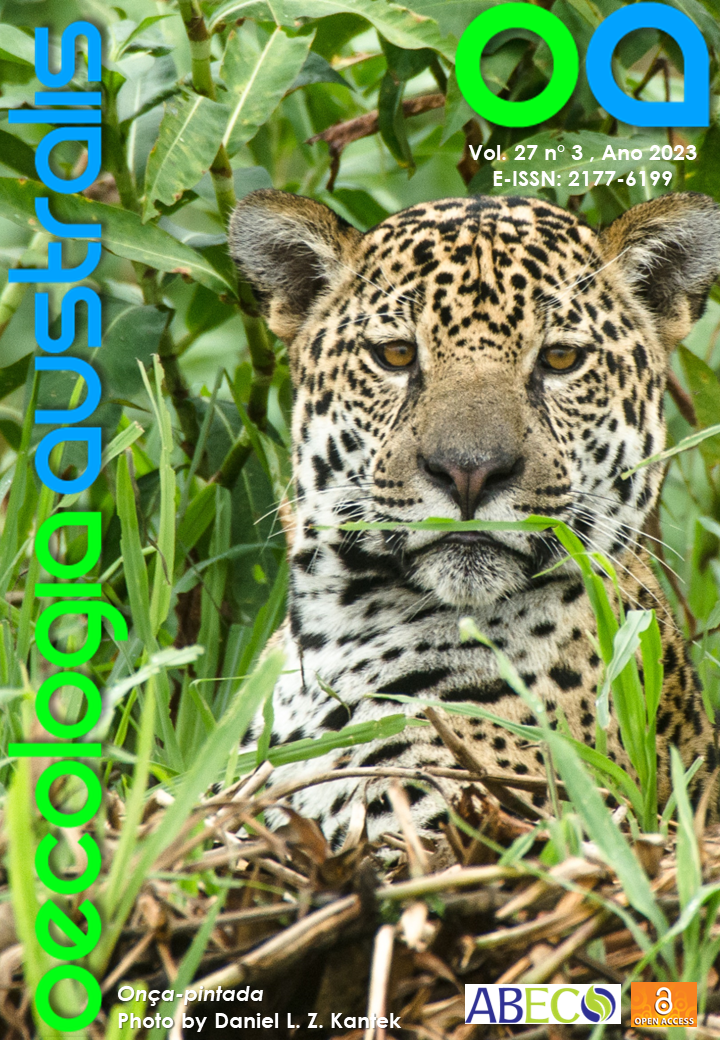DEMOGRAPHY OF MORA PARAENSIS (DUCKE) DUCKE IN THE ESTUARINE FLOODPLAIN FORESTS OF THE AMAZON RIVER
DOI:
https://doi.org/10.4257/oeco.2023.2703.03Palavras-chave:
Elasticity, Integral projection model (IPM), Lowland forest, Population dynamics, SurvivalResumo
Trees of Mora paraensis (known as pracuúba) accumulate most of the commercial volume of the estuarine floodplain forests in the Amazon River, which are being pressed by disordered logging. To verify if their demographic rates are balanced and vary according to their proximity to the Amazon River, we analyzed the population dynamics of this species for 5 years in 240 plots of 10 m x 25 m. Half of the plots were in areas near the Amazon River and half were in more distant areas (3 ha in each site). The annual measured DBH from 2011 to 2015 was used to construct integral projection models (IPMs), based on the variation in the size of individual trees in that period. Tree survival was high in both populations, but only the population closest to the Amazon River showed mortality in trees of greater than 50 cm DBH. This population has a higher pracuúba density and basal area, but a smaller diameter average because there is a greater proportion and predominance of smaller trees. Both the population near and distant from the Amazon River exhibited increasing population growth rates in all sampling intervals. Population growth rates (λ) ranged from 1.02 to 1.25. The survival of M. paraensis populations showed a strong dependence on size and the distance of the Amazon River changes the density and demography of specie in estuarine forests population increases were maintained throughout the evaluation period, with no atypical year causing shrinkage in the populations.


